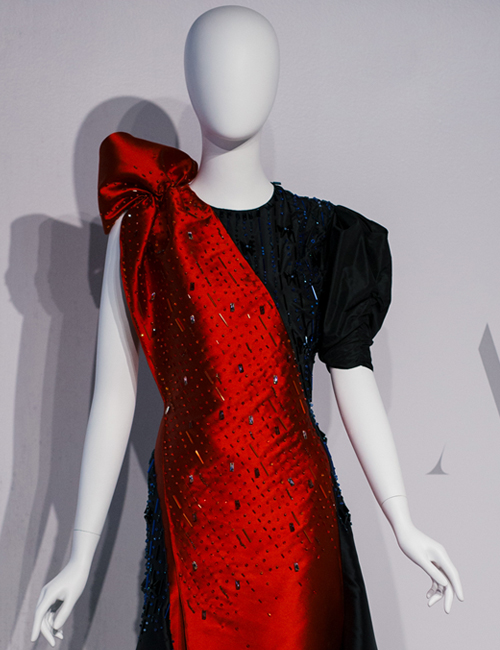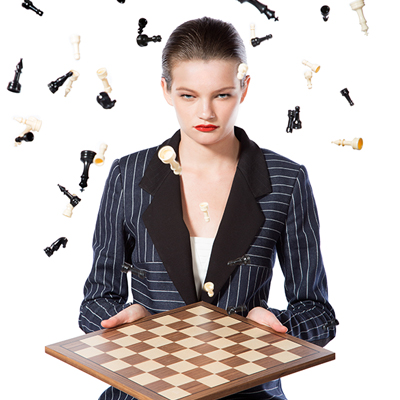By Gabrielle Christiansen, Senior Gallery Attendant
In many sports, teams have a logo, theme song, and uniform which allow fans to recognize players and identify with their chosen team. The presentation of athletes can imbue fans with pride and a sense of community, and fans often buy clothing to match the uniforms of their favorite players. Though chess is organized in a similar way to many popular sports (with its large spectated tournaments, Olympiads, and notoriety of its most skilled players), it has never had a standardized uniform. This is likely in part due to the individuality of the game, which is only played in teams in the context of larger tournaments like the Chess Olympiads, which are held every two years. With the increased recognition of chess as a sport (Magnus Carlsen, for example, has publicly supported making chess into an official sport at the Olympics), the question of what a chess uniform might look like has become more and more relevant.

This was the premise of PINNED! A Designer Chess Challenge, an exhibition conceived by the World Chess Hall of Fame in collaboration with the Saint Louis Fashion Fund in which six designers were tasked with creating a chess fashion line. So how was the idea of a chess uniform realized by these six designers? There were commonalities in many: comfort, shorter sleeves for easy reaching, and sleek professionality. The most interesting part of the exhibition’s results, however, were how the designers’ specific skills were illuminated within the strict confines of the task at hand. Audra Noyes’ propensity for creating a feminine narrative came through in her queen-inspired ensemble while Allison Mitchell focused on material inspiration in her turtle shell handbag. Reuben Reuel’s attention to pattern was utilized in his chessboard inspired avant-garde dress, and Emily Brady Koplar illustrated her knack for intricate detail in her uniform blazer. Charles Smith II envisioned a chess world in a fashion-forward future, while Agnes Hamerlik’s vision was much more dystopian. The designers in Pinned! were able to explore a hypothetical commision while showcasing their own brands in the process.
Ultimately, Audra Noyes' attention to both the history of chess and her own fashion intuition won her the grand prize — a $10,000 scholarship, while the People’s Choice winner, Emily Brady Koplar, took home a prize from Tiffany & Company. All six designers, however, exhibited a great deal of ingenuity in the face of a very specific design challenge. By collaborating with a local institution like the Saint Louis Fashion Fund, the World Chess Hall of Fame was able to learn more about both the world of fashion and the world of chess, and discover the surprising connections between them.

